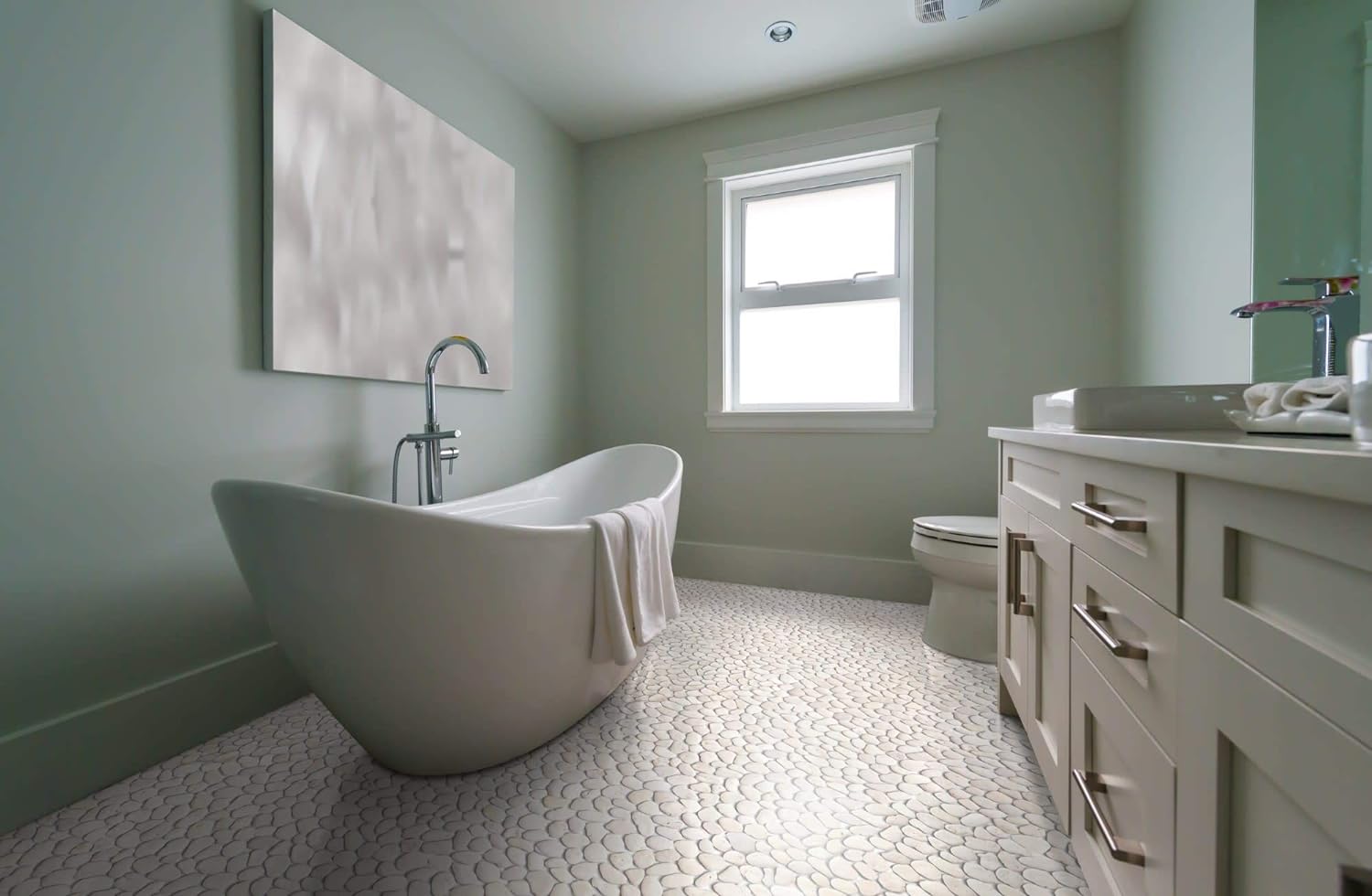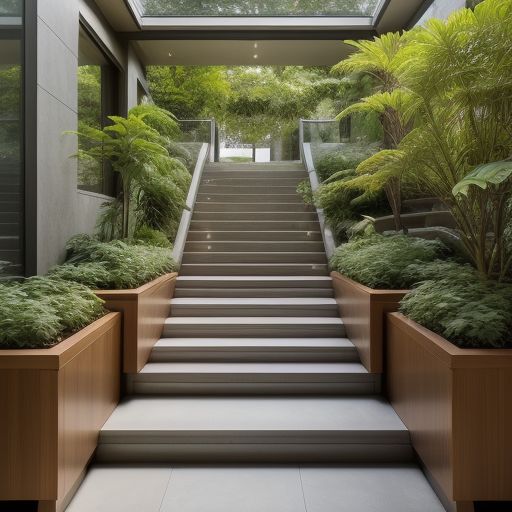Creating More Than What Meets The Eye with Texture and Pattern
August 31, 2023 | by cashsavvyconstruction.com

In the world of design, texture and pattern are the unsung heroes of depth and interest. They can take a basic, bland piece and elevate it to something that catches the eye and engages the senses. Using texture and pattern in a strategic way can lend a visual richness to any design, from a simple logo to an intricate interior space. The art lies in knowing how and where to use them to create a cohesive, stunning end result.
Texture adds dimension and tactile appeal, while pattern creates visual intrigue and can convey a certain mood or message. Together, they can create a dynamic interplay that captures attention and draws the viewer in. When used thoughtfully, they can elevate a design beyond its basic function and transform it into a memorable experience. This post will explore the ways in which texture and pattern can be used to create more than what meets the eye. From the nuances of choosing the right materials to applying them in unexpected ways, we’ll delve into the art and science of balancing these elements to create a cozy and inviting home.
What is texture and pattern?
Texture and pattern are two essential elements that can elevate the look and feel of any space. They not only add visual interest to a room but also play with our senses, creating depth and dimension. While all surfaces and materials have some texture or feel, it is important to note that texture is much more than just rough or smooth. The texture of a material can evoke different emotions and moods, making a room feel smaller, cozier, colder, or even impersonal.
When incorporating texture and pattern into your decorating, it is important to consider the overall effect you want to achieve. For example, if you want to create a warm and cozy atmosphere, you can use soft, plush textures like velvet or fur. Similarly, if you want to create a sleek and modern look, you might opt for smooth and glossy textures like glass or metal. By carefully selecting textures and patterns, you can create a sense of harmony and balance in your space. However, it is crucial to remember that the pattern in a texture can also affect the mood of a room. If a pattern is repeated too often, it can create a feeling of monotony and make the space feel dull and uninteresting. Also, overuse of patterns can result in a cluttered and chaotic design, making it difficult for the viewer to focus on any particular element. On the other hand, if a pattern is used sparingly, it can create visually a sense of balance and sophisication in the design where a specific area of the room is highlighted.



Enhance your design with texture.
Textures can be used to create a tactile experience for the viewer. They can be rough, smooth, bumpy, or gritty, and they can be used to represent different materials or surfaces such as wood, metal, or fabric. The use of texture can also create a sense of depth, making a design look more three-dimensional. A design that is flat and one-dimensional can be made more interesting and visually appealing by adding texture. This can make a design stand out and give it a unique look and feel.
Texture is an important aspect of design that can greatly impact the overall appearance and feel of a space. Not only does texture affect the tactile qualities of a surface, but it can also impact other design elements such as pattern and color. By understanding how texture interacts with these elements, designers can use it as a powerful tool to create focal points and draw attention to specific architectural features. In terms of pattern, texture can have a significant impact on how coarse or fine a pattern appears on a surface. A rough texture, for example, can make a pattern seem more coarse and rugged, while a smoother texture can make the same pattern appear more delicate and refined.
Texture can also affect color by making it appear more intense or subdued. A rough texture can make a colour appear more muted and subdued, while a smoother texture can make it appear more vibrant and vivid. This can be especially important when working with bold or bright colors, as the texture can help to balance out their intensity and make them more visually pleasing. When used effectively, texture can be a powerful decorative tool for drawing attention to a specific area and creating a focal point.


Textures are about contrasting ideas, and sometimes textures do give surprising extremes. For this reason, these extremes could cause a room to have less unity among the various decorating elements. As a result, a room could seem a bit smaller than it actually is, or even larger than it actually is. These effects should be kept in mind when you are choosing textures so you can gain control over what you wish to exaggerate.


Another thing you should know is that textures reflect light. Some textures absorb light better than others, and some reflect light better than others. Some styles rely on the use of light to create the desired mood. For instance, the contemporary style makes full use of light; it is preferable that materials and surfaces reflect light, rather than absorb it. This is because contemporary design aims to create a bright and airy atmosphere. By using materials that reflect light, the space is able to feel open and spacious. This is achieved through the use of materials such as glass, polished metals, and high-gloss finishes.
On the other hand, some styles may prefer the use of materials that absorb light in order to create a cozy and intimate atmosphere. For instance, a rustic style may use materials such as rough-hewn wood and stone, which are known for their ability to absorb light. This creates a warm and inviting atmosphere, perfect for a cabin or mountain home.

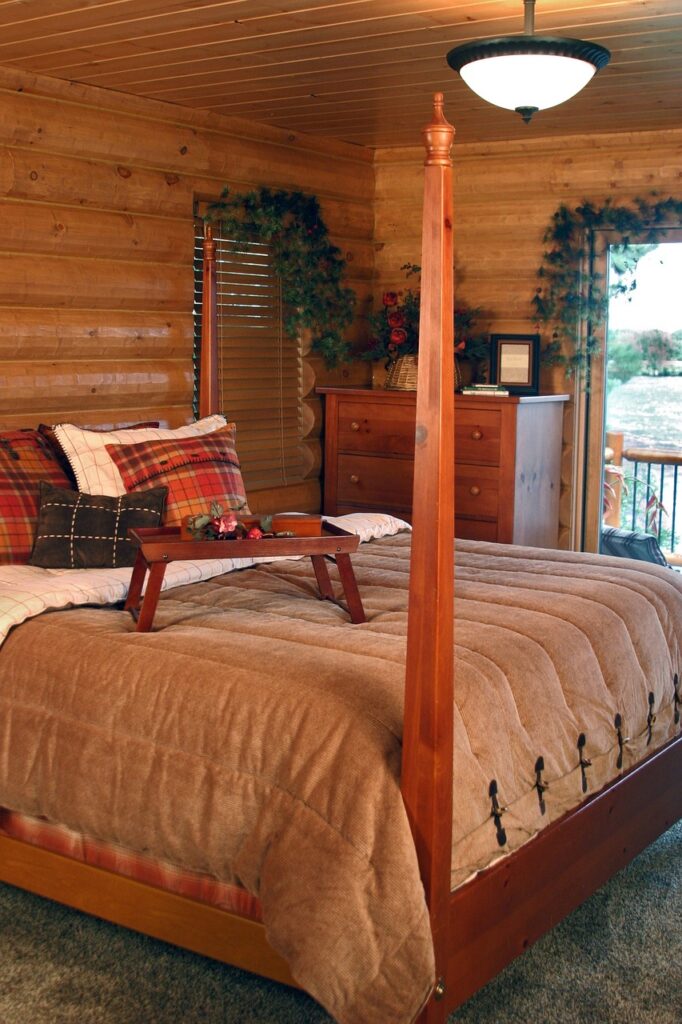
Use patterns to create depth.
Creating a sense of depth in your home can be a challenge, especially if you have a limited amount of space. However, one great way to achieve this is by utilizing patterns throughout your living space. Patterns can be used in a variety of ways to create depth, whether it’s through the use of color, texture, or repetition.
One way to use patterns to create depth is by layering different textures and materials. For example, you might use a patterned rug on top of a plush carpet, or mix and match different materials on your furniture. This creates a sense of visual contrast that can make your space feel more interesting and dynamic.
Another way to use patterns is by incorporating them into your color scheme. You might choose a bold patterned wallpaper or curtains to add color and interest to your walls, or use patterned throw pillows or blankets to add pops of color to your furniture. By using patterns in this way, you can create a sense of depth and variety that will keep your space feeling fresh and exciting. Repetition is also a powerful tool when it comes to creating depth with patterns. You might choose a single pattern and repeat it throughout your space, whether it’s on your curtains, pillows, or even your floors.
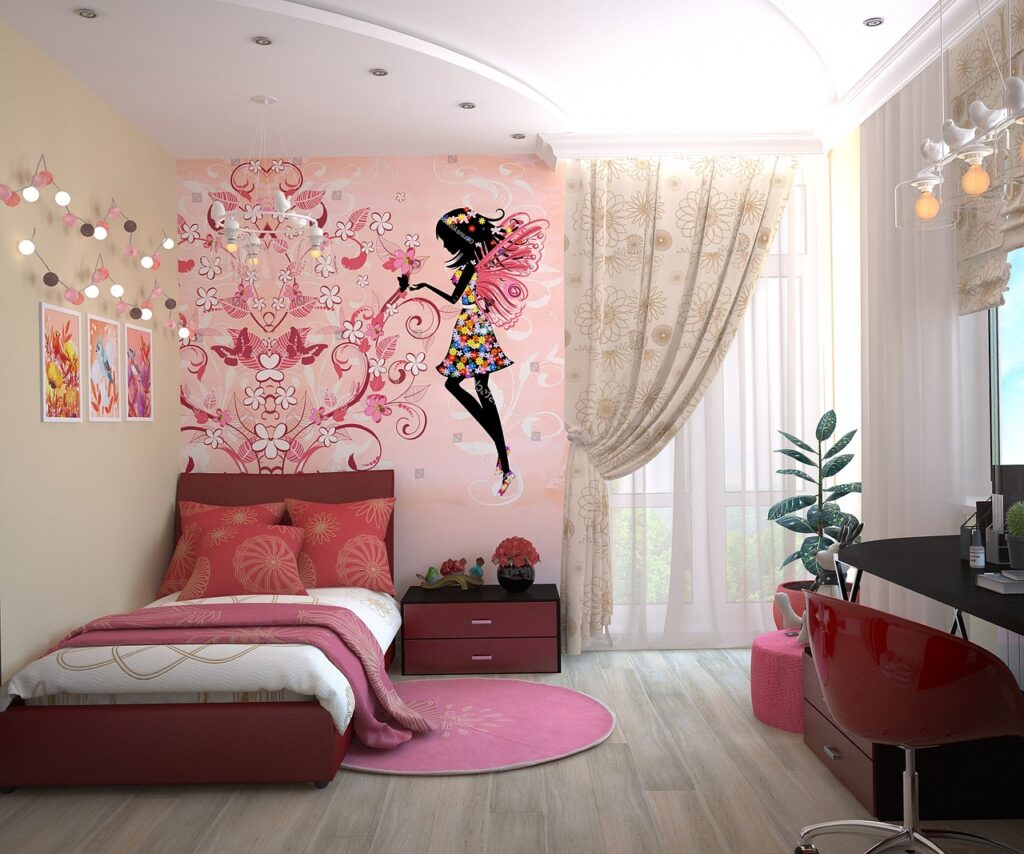

Patterns are like the spices of design. They can add flavor, depth, and complexity to any space. But just like with a recipe, it’s easy to go overboard. Too many patterns can create a visual cacophony that leaves your eyes feeling overwhelmed and confused. That’s why it’s important to use patterns thoughtfully and intentionally, like a skilled chef adding just the right amount of seasoning to a dish. One trick to using patterns effectively is to think about the scale of each pattern.
If you have a large space, you might choose larger patterns to create a sense of grandeur and drama. In a smaller space, smaller patterns can help make the room feel more cozy and intimate. And if you’re feeling bold, you can even mix different scales of patterns together for a playful and eclectic look. Just like with cooking, the key is finding the right balance to create a harmonious and satisfying end result.

Combine textures for added intrigue.
When it comes to home decor, texture is often an overlooked element. However, incorporating various textures into your design can add an extra layer of intrigue and elevate the overall aesthetic of your space. Combining different textures can create a harmonious and visually stimulating environment that is both inviting and comfortable. There are countless ways to incorporate textures into your home decor. Consider mixing natural materials like wood, stone, and woven textiles with man-made materials such as metal, glass, and plastic. For example, pairing a plush velvet sofa with a sleek glass coffee table can create a balance between softness and hardness.
Similarly, layering a fluffy wool rug over a polished concrete floor can add warmth and depth to the space. Another way to incorporate textures is through accent pieces like pillows, blankets, and curtains. These items can be made from a variety of fabrics such as linen, cotton, silk, and even faux fur. Mixing and matching these different materials can create a cozy and inviting atmosphere in your home.
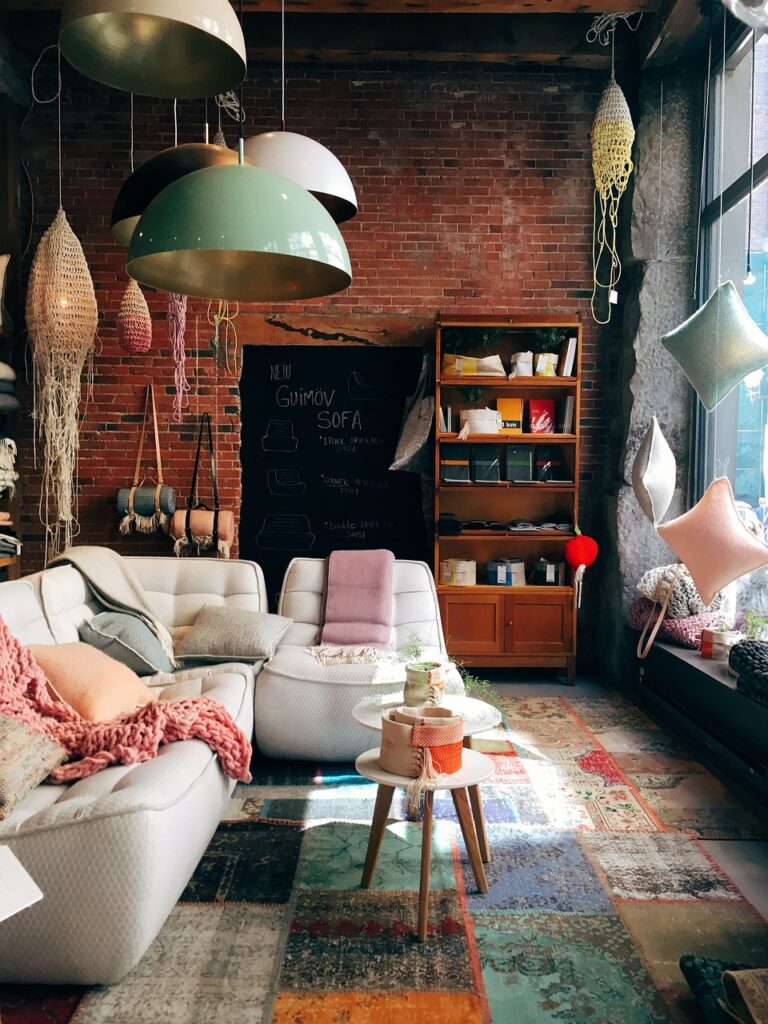
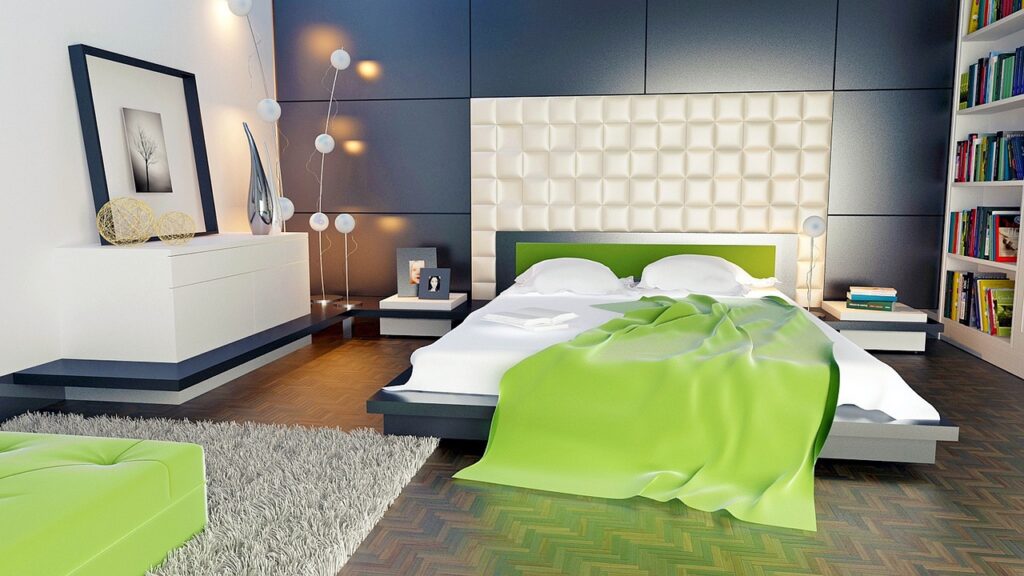
When combining textures, it’s important to keep a cohesive color scheme in mind. While you can incorporate different textures, you still want them to complement each other and work together to create a harmonious aesthetic. For example, you could combine a variety of neutral-toned materials like linen, jute, and wood to create a cohesive, natural look. Another way to add texture to your decor is through the use of patterns and prints. Mixing and matching different patterns, such as stripes, florals, and geometric shapes, can create a visually interesting space. However, it’s important to balance the patterns with solid colors to avoid overwhelming the eye.
Strategic pattern placement is key.
Strategic pattern placement is an essential aspect of interior designing that can make or break the overall look and feel of a space. Patterns can add depth, texture, and personality to a room, but they must be used thoughtfully and purposefully to achieve the desired effect. By carefully selecting and placing patterns throughout a space, an interior designer can create a cohesive and visually appealing environment. One important factor to consider when placing patterns in a room is scale. Large patterns can overwhelm a small space, while small patterns may get lost in a larger room. A skilled interior designer will carefully consider the size and proportions of a space and choose patterns that will complement its dimensions.
Additionally, the repetition of patterns can create a sense of continuity and flow throughout a room, leading to a more cohesive and harmonious design scheme. Another important consideration is the color palette of a space. Patterns should be chosen to complement and enhance the colors already present in a room. An interior designer may choose to incorporate patterns in contrasting colors to create a bold and eye-catching statement, or they may opt for subtle patterns in neutral tones for a more understated effect. The placement of patterns can also be used to draw attention to specific features or areas of a room, such as highlighting a focal point.


When it comes to pattern placement, designers must consider the scale of the patterns in relation to the size of the room and its furnishings. Large, bold patterns can overwhelm a small space, while small patterns in a large room may appear lost or insignificant. It is important to strike a balance between the size of the patterns and the proportions of the space.
Another key factor to consider is the placement of patterns in relation to one another. Too many competing patterns can create a chaotic and overwhelming effect, while too little can result in a dull and uninteresting space. A well-placed pattern can serve as a focal point or accent, drawing the eye to a specific area of the room and adding visual interest. Color is another important consideration when it comes to pattern placement. A carefully chosen color scheme can tie together different patterns and unify a space. Complementary colors can create a harmonious effect, while contrasting colors can create a bold and dramatic statement
Experiment with textures and patterns.
Experimenting with textures and patterns is a great way to create visual appeal in your home. By incorporating a variety of textures and patterns into your decor, you can add depth and interest to your space. Whether you’re looking to create a cozy atmosphere or a bold statement, textures and patterns can help you achieve your desired look. When it comes to textures, there are many different options to choose from. Soft and fuzzy textures like fur and wool can add warmth and comfort to a room, while smooth and shiny textures like glass and metal can create a sleek and modern feel.
Textures can also be more tactile, such as woven baskets or rough wood surfaces, which add a natural and organic element to your decor. By mixing and matching different textures, you can create a layered and dynamic space that feels inviting and visually engaging. Patterns are another way to add visual interest to your home. Whether you prefer bold geometric patterns or subtle floral prints, incorporating patterns can help break up the monotony of solid colored walls and furniture.

Items such as throw pillows, curtains, and area rugs can be easily switched out seasonally or as your tastes change, making them a versatile way to experiment with different patterns and color schemes. Experimenting with textures and patterns is a great way to add visual appeal to your home. By incorporating a variety of textures and patterns, you can create a space that is visually interesting and engaging. When choosing textures and patterns for your home, it is important to consider the overall style and feel you are trying to achieve.
The creation process can be overwhelming, especially if you do not have a clear idea of what you want. This is where a swatch board can come in handy. A swatch board is a collection of various fabric samples, paint chips, and other materials that you can use to experiment with different textures, patterns, and colours. It is an invaluable tool for any artist or designer as it helps them visualize how different materials, patterns, and colours will look together before incorporating them into their final design. With a swatch board, you can easily lay out your favourite fabrics or colours side by side to see how they complement each other. You can also mix and match different textures to see which ones work well together.
Additionally, you can use the board to test out different patterns to see how they look when combined with other elements. The best thing about a swatch board is that it allows you to experiment without committing to anything. You can move things around, swap colours and patterns, and try out different textures until you find a combination that works for you. This can save you time and money.

Conclusion
To conclude, remember texture is what helps you create style, and makes a bold or a subtle statement. It makes use of pattern, colour and light. The right combination can be daunting at times, so select with care. If you don’t trust your instincts you can always seek out the ideas of professionals and their suggested collections of various items for certain styles and moods. Another thing you can do is to create a swatch board where you can compare the samples of fabrics, wood finishes, and other surface materials.
In this post, texture and pattern are two of the most powerful tools in a designer’s arsenal. They have the ability to transform a flat and lifeless design into a multi-dimensional masterpiece. The key to using them effectively is to experiment and think outside the box. Don’t be afraid to mix and match different textures and patterns to create something truly unique and unexpected. With a little creativity, you can create designs that are more than what meets the eye and leave a lasting impression on your audience. So, go ahead and unleash your inner artist and create something truly amazing!
RELATED POSTS
View all
